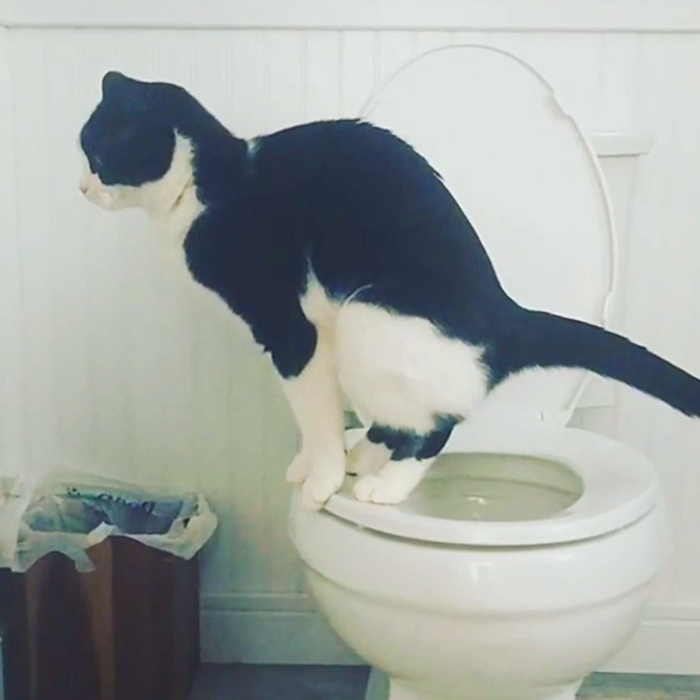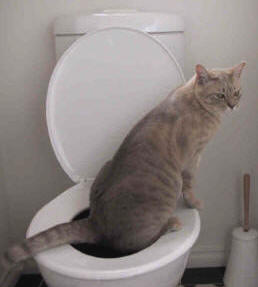An Significance of Proper Disposal of Animal Waste
An Significance of Proper Disposal of Animal Waste
Blog Article
This great article following next pertaining to 4 Reasons Why Dog Poop Cleanup is Important is without a doubt enlightening. You should look it over.

When it involves throwing away waste, specifically animal waste, many people typically turn to the hassle-free alternative of flushing it down the commode. Nonetheless, this seemingly easy solution can have severe consequences for the environment and public health. In this article, we'll discover why flushing pet waste down the bathroom is a poor concept and give different techniques for proper disposal.
Introduction
Correct waste disposal is essential for maintaining ecological sustainability and public health. While it may appear safe to flush animal waste down the bathroom, it can result in numerous problems, both for the environment and human health.
Risks of flushing pet waste
Environmental effect
Purging animal waste presents hazardous bacteria and virus right into rivers, which can negatively affect aquatic ecological communities. These microorganisms can contaminate water resources and harm aquatic life, interrupting fragile ecosystems.
Public health problems
Animal waste consists of harmful germs such as E. coli and Salmonella, which can posture significant health dangers to humans. Flushing animal waste down the bathroom can infect water products, leading to the spread of diseases and infections.
Alternatives to flushing
Rather than purging pet waste down the commode, there are numerous alternative disposal methods that are more environmentally friendly and sanitary.
Composting
Composting pet waste is an eco-friendly method to take care of it. By composting, raw material is broken down into nutrient-rich soil, which can be made use of to feed gardens and plants.
Land fill disposal
Taking care of pet waste in a landfill is an additional alternative. While not as eco-friendly as composting, it is a much safer alternative to flushing, as it prevents the contamination of water resources.
Animal waste disposal systems
There are specific pet garbage disposal systems available that securely and here hygienically get rid of pet waste. These systems typically make use of enzymes to break down waste and eliminate odors.
Actions to correct animal waste disposal
To make certain proper disposal of pet waste, adhere to these actions:
Scooping and nabbing waste
On a regular basis scoop and bag pet waste making use of biodegradable bags. This avoids waste from polluting the atmosphere.
Utilizing marked waste containers
Dispose of bagged pet waste in marked waste containers, such as garden compost bins or landfill bins. Stay clear of flushing it down the toilet at all costs.
Cleaning can and animal locations routinely
Routinely clean litter boxes and family pet areas to avoid the build-up of waste and microorganisms. Use pet-safe cleansing items to preserve health.
Benefits of proper disposal techniques
Adopting appropriate disposal methods for animal waste provides numerous benefits:
Decreased environmental pollution
Correct disposal methods minimize the risk of environmental pollution, securing rivers and communities from contamination
Lessened threat of water contamination.
By avoiding flushing pet waste down the commode, the threat of water contamination is considerably minimized, securing public health.
Boosted hygiene and health
Correct disposal approaches promote better hygiene and health, developing a much safer atmosphere for both people and animals.
Conclusion
Finally, purging animal waste down the bathroom is dangerous to the atmosphere and public health. By embracing alternate disposal methods and adhering to appropriate waste management practices, we can minimize the adverse effect of pet waste and contribute to a cleaner, much healthier world.
What To Do With Dog Poo – The Do's And Don'ts Of Disposing Of Faeces
Dog poo bins
Some councils provide dedicated dog waste bins in popular dog-walking areas that can take dog poo that has been bagged but you can legally dispose of dog waste in any public litter bin, as long as it is securely bagged. This also applies to your wheelie bin at home.
Do not flush
Water companies do not recommend flushing dog faeces down the toilet because certain parasites can survive the water processing treatment and are potentially harmful to humans. You should also never consider flushing dog poo that has been bagged down the toilet as the bags will not break down and instead create severe blockages in the sewage system.
In the woods
The Forestry Commission promotes a ‘stick and flick’ method for dealing with waste in the woods. This means finding a stick and using it to flick any poo from off the path so that it is out of the way of other walkers. You could also bury it as long as it is not in an area where there might be livestock.
Livestock
Parasites found in dog poo can be transmitted to livestock if they inadvertently eat infected faeces that has been left on grazing land. This could result in the death of sheep or abortion in cattle so you should always make sure you pick up your dog’s waste in fields where livestock could be present.

Routinely clean litter boxes and family pet areas to avoid the build-up of waste and microorganisms. Use pet-safe cleansing items to preserve health.
Benefits of proper disposal techniques
Adopting appropriate disposal methods for animal waste provides numerous benefits:
Decreased environmental pollution
Correct disposal methods minimize the risk of environmental pollution, securing rivers and communities from contamination
Lessened threat of water contamination.
By avoiding flushing pet waste down the commode, the threat of water contamination is considerably minimized, securing public health.
Boosted hygiene and health
Correct disposal approaches promote better hygiene and health, developing a much safer atmosphere for both people and animals.
Conclusion
Finally, purging animal waste down the bathroom is dangerous to the atmosphere and public health. By embracing alternate disposal methods and adhering to appropriate waste management practices, we can minimize the adverse effect of pet waste and contribute to a cleaner, much healthier world.
What To Do With Dog Poo – The Do's And Don'ts Of Disposing Of Faeces
Dog poo bins
Some councils provide dedicated dog waste bins in popular dog-walking areas that can take dog poo that has been bagged but you can legally dispose of dog waste in any public litter bin, as long as it is securely bagged. This also applies to your wheelie bin at home.
Do not flush
Water companies do not recommend flushing dog faeces down the toilet because certain parasites can survive the water processing treatment and are potentially harmful to humans. You should also never consider flushing dog poo that has been bagged down the toilet as the bags will not break down and instead create severe blockages in the sewage system.
In the woods
The Forestry Commission promotes a ‘stick and flick’ method for dealing with waste in the woods. This means finding a stick and using it to flick any poo from off the path so that it is out of the way of other walkers. You could also bury it as long as it is not in an area where there might be livestock.
Livestock
Parasites found in dog poo can be transmitted to livestock if they inadvertently eat infected faeces that has been left on grazing land. This could result in the death of sheep or abortion in cattle so you should always make sure you pick up your dog’s waste in fields where livestock could be present.

Do you enjoy reading about Why you should never flush dog poop down the toilet? Create a short review further down. We will be glad to know your suggestions about this review. Hoping to see you back again later on. Are you aware of someone else who is occupied with the subject? Why not share it. Bless you for your time. Revisit us soon.
Call Report this page